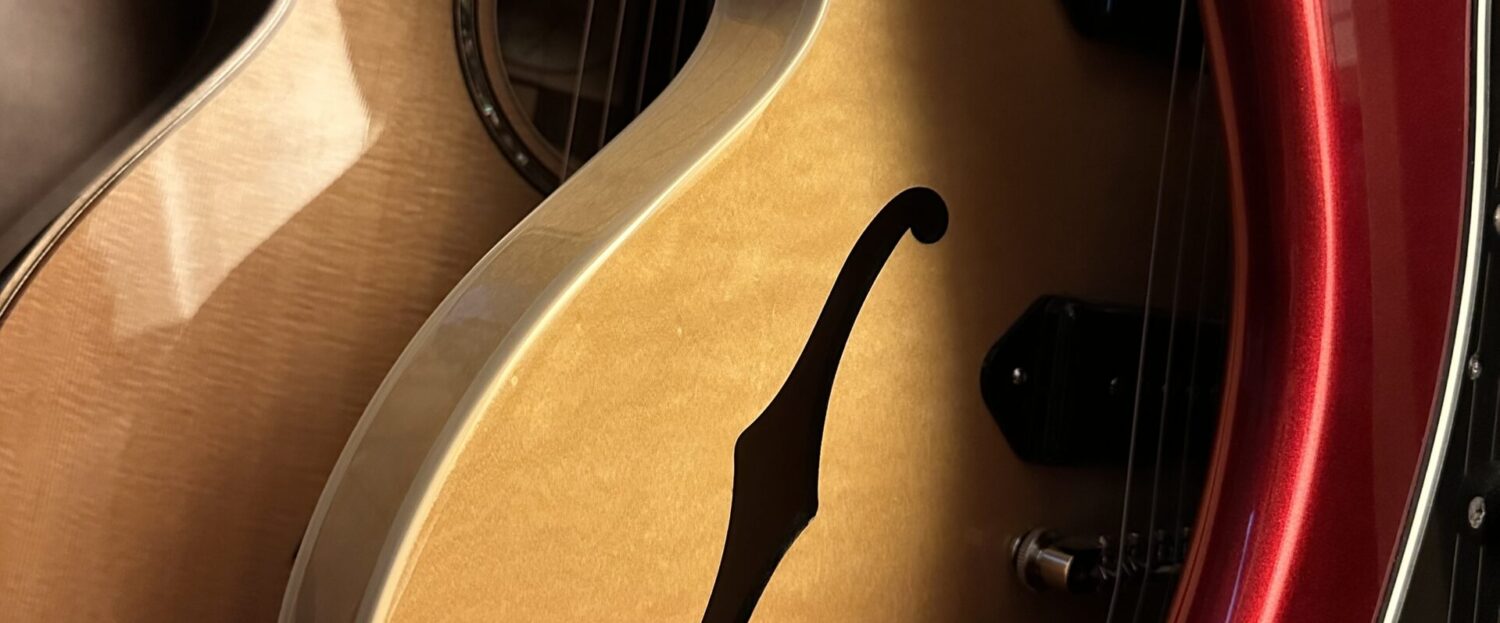Some people think a guitar that’s been “broken in” sounds quite different from a new one. The accumulated vibrations affect the wood & glue themselves, making the guitar sound “more open”, warmer, brighter, louder, or just plain better.
I didn’t know how true this is, but wanted to find out. I didn’t want to wait months or years, so I built a tool to break-in my guitar while I’m asleep or not home. You can try it here too.
The Guitar Vibrator Tool
The way this works is pretty simple: put your guitar close to a speaker that’s playing one of these sound files, wait several days, and see if it makes your guitar sound better. Easy!
For deeper usage info, go to: How to Break-in a Guitar
Use Guitar Vibrator for free via Spotify…
Use Guitar Vibrator for free on Apple Music…
The theory is that your guitar’s strings will resonate with the Guitar Vibrator sounds. These string vibrations will then spread throughout the instrument, mimicking the physical effect of actually playing the instrument. The wood and glue will subtly change over time, allowing the guitar to resonate more easily, sounding “played in”, but without you having to personally play it for those first few hundred hours. Let the Guitar Vibrator run long enough and you’ll get a mature-sounding guitar in a week or two instead of several months. That’s the theory!
To very quickly see this in action, put your mouth close to your guitar and sing straight into one of the sound holes. Pick an E or any open string pitch. Make a big sound, hear your guitar ring, and watch your strings start to vibrate. Guitar Vibrator does the same thing, but works 24/7 and without you singing.
If you’re trying this for the first time and you’ve got more than one guitar to choose from, definitely start with an acoustic or hollow/semi-hollow electric. If you like the result, try a solid electric and see if you can detect the effect there too.
For best effect, place your guitar in front of a speaker with decent bass (the low E string vibrates at 82Hz, lower than most phone or laptop speakers but easily within the range of most bookshelf speakers). Ideally the guitar should be free to vibrate, hung from the headstock or otherwise propped up for free resonance. The ideal volume for vibrating your guitar is probably more limited by your domestic situation than anything based on acoustic theory. The louder the sound source, the faster the break-in should be.
You’ll notice there’s no cost to trying this. If it doesn’t do anything, there’s nothing lost. If it does work, great! Tell other players and soon we’ll make every guitar on Earth sound 2% better. Or maybe just 30 years older 🙂
The Guitar Vibrator Sound Source
To get started, just use the embedded playlists above from Spotify & Apple Music. These both just repeat “Capo 0, Many Overtones” over and over again for about 24 hours. It’s my #1 option and the best place to start. Later on, if you’re curious and want more options, see this page: Advanced Vibrations. I made a bunch of extra sound sources with varied waveforms and that’s where they’re explained. I’m not sure which of these are the best ideas, but perhaps we’ll find out after vibrating 100s or 1000s of guitars.
Try It!
Hopefully you find this easy enough to use. If it magically transforms your guitar into a better version of itself, hooray! And, you’re welcome!
